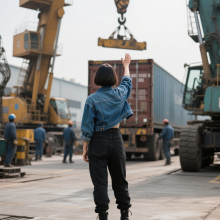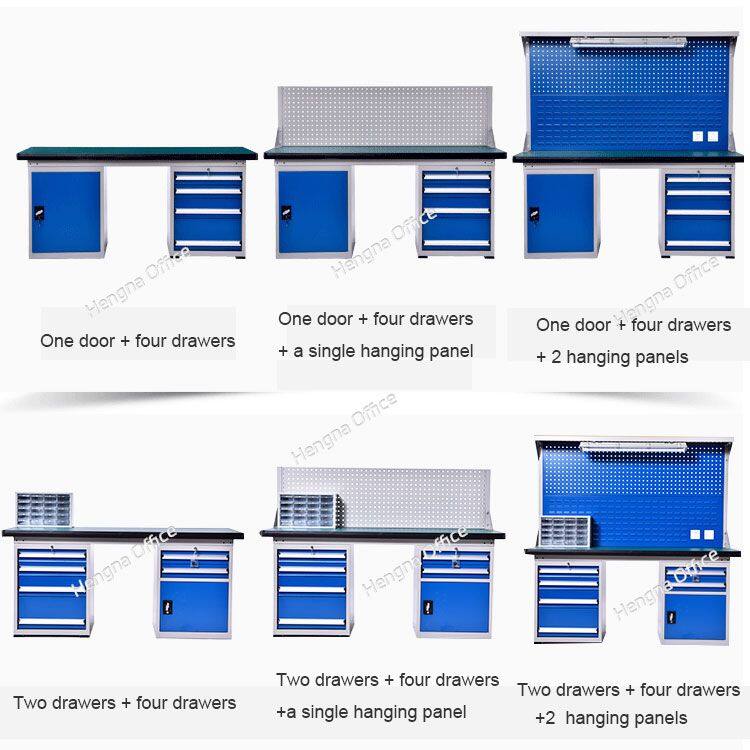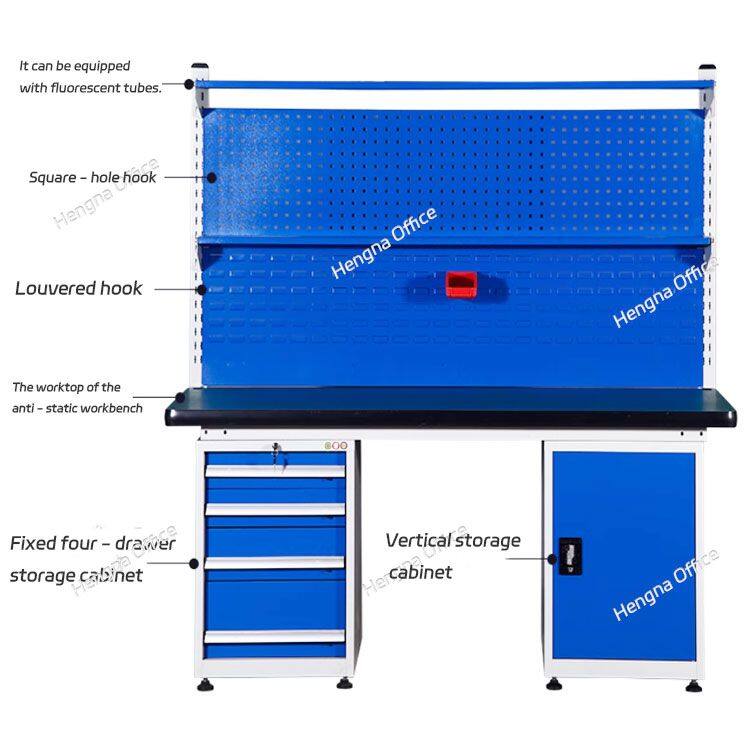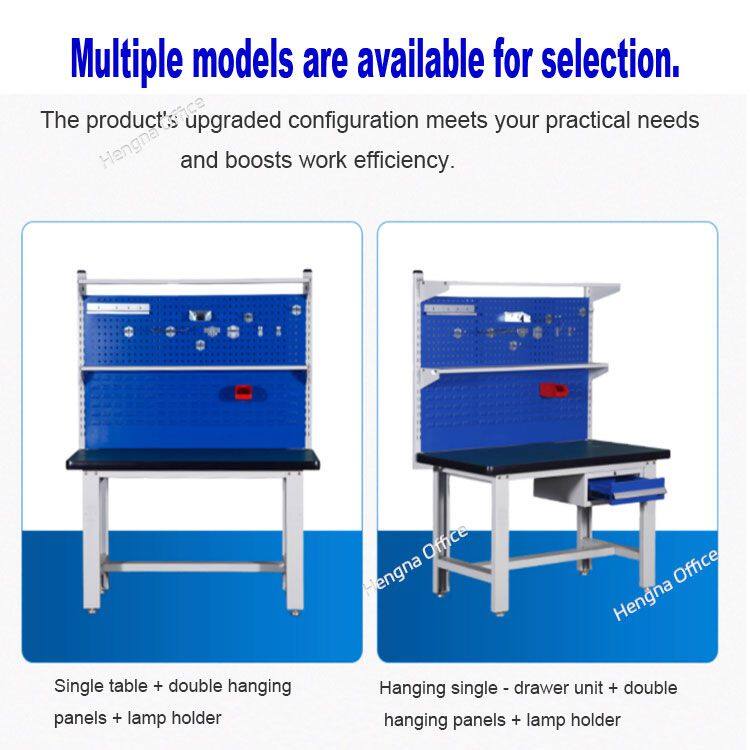-
 Sarah
Hi there! Welcome to my shop. Let me know if you have any questions.
Sarah
Hi there! Welcome to my shop. Let me know if you have any questions.
Your message has exceeded the limit.

Educational Heavy Workbenches: Building Skills in Technical Training
2025-11-03 13:41:37
Technical education and vocational training programs require workbenches that can withstand heavy student use while supporting effective learning and skill development. Educational heavy workbenches serve as foundational equipment in workshops, laboratories, and training facilities where students learn practical skills in various trades and technical fields. This comprehensive guide explores how specialized workbenches enhance technical education and the essential features to consider when selecting workbenches for educational environments.

Understanding Educational Workshop Requirements
Educational environments present unique challenges that demand specialized workbench solutions. The need to accommodate multiple students with varying skill levels, withstand frequent use and potential abuse, and support diverse learning activities requires workbenches designed specifically for educational applications. Technical education programs often involve various trades and skills that require different workbench configurations and features.
Educational workbenches must balance durability with functionality, providing robust construction that withstands student use while supporting effective learning processes. The ability to accommodate different teaching methods, project types, and student needs directly impacts educational effectiveness and student engagement. These specialized requirements distinguish educational workbenches from commercial or industrial alternatives.
Durability and Construction Standards
Educational workbenches must withstand constant use, potential abuse, and frequent cleaning without compromising safety or functionality. Quality construction typically features heavy-gauge steel frames, often 12-14 gauge thickness, providing exceptional strength and resistance to damage. Welded construction rather than bolted connections eliminates potential failure points under stress and extends service life in demanding educational environments.
Surface materials must resist impacts, chemical exposure, and frequent cleaning while maintaining appearance and functionality. High-pressure laminate surfaces provide durability and easy maintenance for general technical education applications. Chemical-resistant surfaces such as epoxy resin or stainless steel support specialized programs involving chemicals or laboratory work. These material choices ensure long-term durability and reduce maintenance requirements.
Safety Features for Student Protection
Student safety represents paramount importance in educational environments, and workbenches must incorporate comprehensive safety features. Rounded corners and edges reduce injury risk during busy class periods. Built-in safety features including non-slip surfaces, secure drawer locking mechanisms, and emergency stop integration prevent accidents and injuries.
Compliance with educational safety standards and local building codes ensures safe operation in schools and training facilities. Proper anchoring prevents tipping, especially important for workbenches used by younger students or in high-traffic areas. Some educational workbenches incorporate built-in safety shielding, ergonomic features, or specialized safety equipment that enhances student protection during learning activities.

Flexibility and Multi-Purpose Design
Educational programs often require workbenches that can accommodate various activities and teaching methods. Multi-purpose designs support different trades, skills, and project types within the same workspace. Adjustable height features accommodate students of different ages and sizes, ensuring ergonomic comfort and accessibility for all learners.
Modular designs allow for reconfiguration as curriculum needs change or new programs are added. The ability to add components, adjust configurations, or connect multiple units creates versatile learning spaces that adapt to evolving educational requirements. Some educational workbenches feature interchangeable components that support different trades or skills training within the same framework.
Storage and Organization Systems
Technical education involves extensive tools, materials, and equipment that require organized storage solutions. Educational workbenches incorporate various storage options including drawers, cabinets, and shelving systems designed specifically for student use. Drawer capacity must support various tool sets and materials while remaining accessible to students of different skill levels.
Specialized storage features include tool shadow boards that help students learn proper tool organization and identification. Lockable storage provides security for valuable tools and equipment when not in use. Some educational workbenches feature integrated material storage that supports project-based learning activities. These organization systems enhance efficiency and teach valuable workplace skills.
Integration with Educational Technology
Modern technical education increasingly incorporates technology that must be accommodated within workbench designs. Educational workbenches may feature built-in power distribution systems, data connections, or mounting points for computers and learning devices. Some models incorporate interactive displays or demonstration areas that enhance teaching effectiveness.
Technology integration supports various learning modalities including digital instruction, simulation, and assessment. Cable management systems keep electrical and data cables organized and prevent trip hazards in busy classroom environments. Some educational workbenches feature specialized mounting systems for cameras, microscopes, or other technical equipment that enhances learning experiences.
Ergonomics and Learning Comfort
Student comfort directly impacts learning effectiveness and engagement in technical education programs. Educational workbench height typically ranges from 30-36 inches, with customization based on student age levels and specific activities. Some models offer height adjustability to accommodate different students and various learning activities.
Ergonomic considerations include adequate workspace for individual and collaborative projects, proper lighting integration, and tool positioning that reduces physical strain. Some educational workbenches feature built-in seating or adjustable stools that accommodate different learning preferences. These ergonomic features enhance student comfort and focus during extended learning periods.
Specialized Features for Different Trades
Technical education encompasses various trades and skills that require specialized workbench features. Woodworking programs may need integrated vise systems and dust collection connections. Automotive programs require chemical resistance and heavy load capacity. Electronics programs need ESD protection and integrated power systems.
Some educational workbenches feature modular designs that allow for specialization based on specific program needs. The ability to add trade-specific components or accessories enhances versatility and supports diverse curriculum requirements. This specialization ensures that workbenches effectively support learning outcomes across different technical education programs.

Collaborative Learning Support
Modern technical education increasingly emphasizes collaborative learning and teamwork. Educational workbenches may feature designs that support multiple students working together on projects. Some models incorporate shared work surfaces, integrated seating areas, or group project stations that facilitate collaboration.
Collaborative features may include built-in presentation areas, demonstration spaces, or integrated technology that supports group work. The ability to reconfigure workspaces for individual versus group activities enhances flexibility and supports various teaching methods. These collaborative features prepare students for workplace teamwork and communication skills.
Maintenance and Long-Term Value
Educational workbenches represent significant investments that must provide reliable service for many years while withstanding heavy student use. Quality construction materials and finishes resist wear, damage, and frequent cleaning. Modular designs allow for component replacement rather than complete workbench replacement when damage occurs.
Maintenance considerations include easy-to-clean surfaces, replaceable components, and accessible hardware for adjustments and repairs. Some educational workbenches feature warranties or service agreements that provide long-term protection for the investment. These maintenance and durability features ensure reliable performance and protect educational budgets.
Budget Considerations and Funding
Educational institutions operate under tight budget constraints and must maximize value from every investment. Workbench selection must balance initial costs with long-term durability and educational effectiveness. Some manufacturers offer educational discounts or bulk purchasing programs that help schools manage costs while obtaining quality equipment.
Funding considerations may include grants, vocational education funding, or industry partnerships that support equipment purchases. The ability to demonstrate educational effectiveness and student outcomes helps justify workbench investments. Some educational workbenches feature scalable designs that allow for gradual expansion as programs grow or funding becomes available.
Educational heavy workbenches serve as essential platforms for technical skill development and hands-on learning. By understanding durability requirements, safety features, flexibility needs, and educational integration capabilities, schools and training centers can select workbenches that enhance learning effectiveness and provide long-term value. The right educational workbench becomes an essential partner in technical education, supporting student skill development, safety, and engagement in hands-on learning activities.

Tags: Educational Heavy Workbenches, Building Skills, Technical Training

